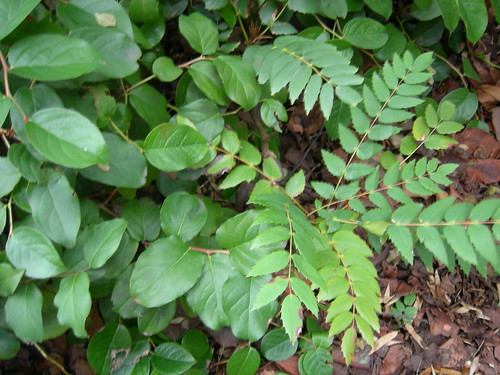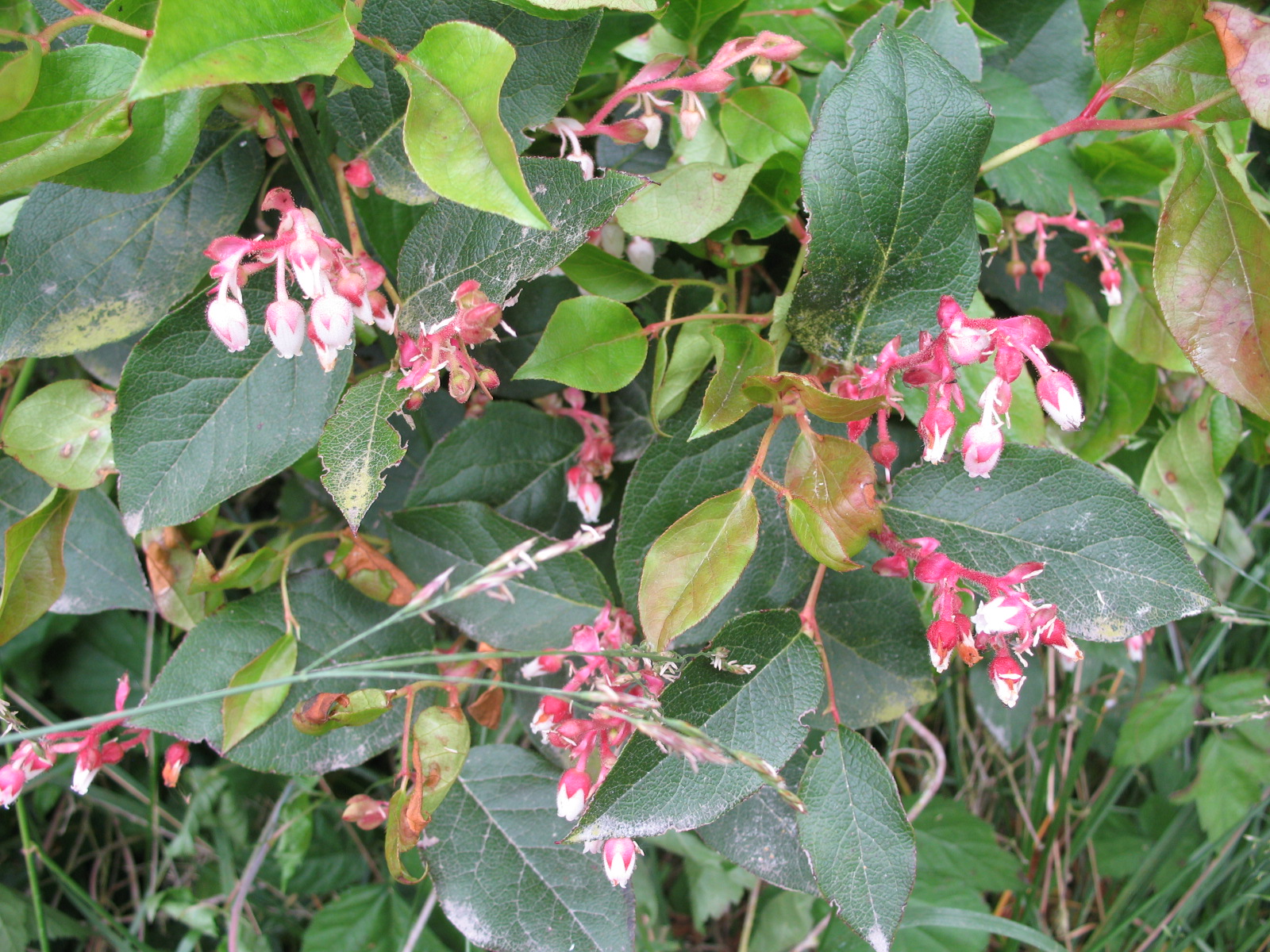There is a shiny green-leafed ground cover bush that grows seemingly everywhere in western Washington, and you probably pass by it on the daily unaware of it's edible properties. Salal, as the coastal Chinook called it, or Gaultheria shallon, is a beautiful native bush which produces blueberry-like berries in late summer.
Salal is often found looking like the above picture, bunched around the trunks of conifers, it's favorite companion species. It is identifiable by it's shiny oval leaves that slightly purple in winter; its red-ish stems and rhizomes; and its lantern-like hanging pink flowers.

According to King County's Native Plant Guide:
"The single best ground cover for northwest gardens, salal is a do it all plant. Long recognised as one of the best foliage plants for flower arranging, it is also one of the most adaptable in the native repertoir"
| Salal distribution. |
But this plant goes beyond just being decorative. The Oregon Encyclopedia says:
"Native Americans made great use of salal as a medicine (dermatological aid, gastrointestinal aid, and cough medicine), food (berries, dried or cooked), dye (purple from fruits, yellow from leaf infusion), and untensil (stems used as cooking tools)."So, florists use the foliage as decorations in arrangements. Landscapers use the bush as a hedgerow and ground-cover. Gardeners use salal to attract bees and other beneficial insects. Everyone can eat the berries or make preserves, pie, or wine. On top of that this is a native species, cultivated by the Native Americans, so it's well adapted and probably resistant to common ailments in this climate. I'm sold, and I want a patch of it to start.
The University of Washington says that salal is best propagated through rhizome cuttings or seeds. Getting the seed would involved waiting until it fruits, collecting berries, mashing them and spreading the mixture to dry, picking out seeds and starting them. I can do this and probably will, but taking cuttings is a lot faster. Rhizome cutting is a form of vegetative propagation that was common among Native Americans and is actually really simple. However, you should never attempt to harvest wild plants unless you have permission. This is just to protect them in case they are rare, as the process could kill the parent plant.
| A row of new plants growing from an underground rhizome. |
 Find new growth sticking up out of the ground, usually within proximity to a larger plant. Rhizomes are underground stems that grow out in all directions from the parent plant and pop up new plants as they go.
Find new growth sticking up out of the ground, usually within proximity to a larger plant. Rhizomes are underground stems that grow out in all directions from the parent plant and pop up new plants as they go. Dig down around the new growth until you find the actual rhizome stem. You can dig with your hands or a shovel. You are looking for an underground stem with small hair roots coming out of it.
 | |||||||||||||||
| These cuttings are ready for planting. |
Once you have your cuttings with rhizomes intact; they can go straight into the ground. If you were trying to take it into a more foreign environment, an organic rooting tea may help. If you're transplanting it on the west coast, it's going to take no problem. Salal likes cool, moist soil and shade. It likes to grow near ferns and conifers but will do well on it's own as a backyard hedge.
 | ||||
| New salal cuttings growing with some garden fungi. |
 | |
| Salal used as a driveway hedge. |





Great post. I love native plants and critters, and learning about them. I've spent a lifetime enjoying the simple beauty and brilliance of nature. Thanks for sharing! :)
ReplyDeleteIs there an ideal time of year to transplant rhizomes? (I'm in Victoria BC.)
ReplyDeleteExcellent post, it was informative and very useful, as I have a Salal that's spontaneously starting in my yard and want to transplant it near an old fir. Thanks for sharing the info..
ReplyDeleteHave you experienced leaves on Salal that are chewed along the edges. DO you know what could be doing the chewing?
ReplyDeleteDeer!
Delete